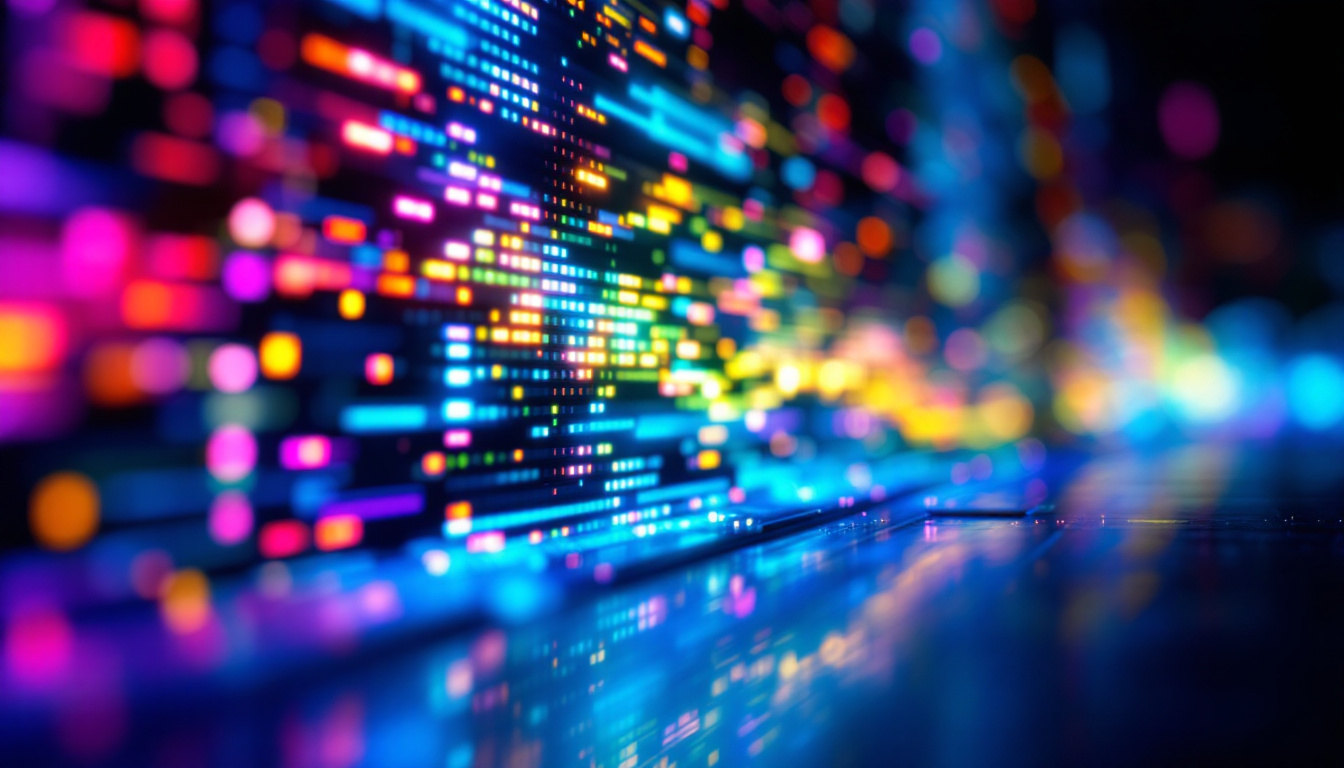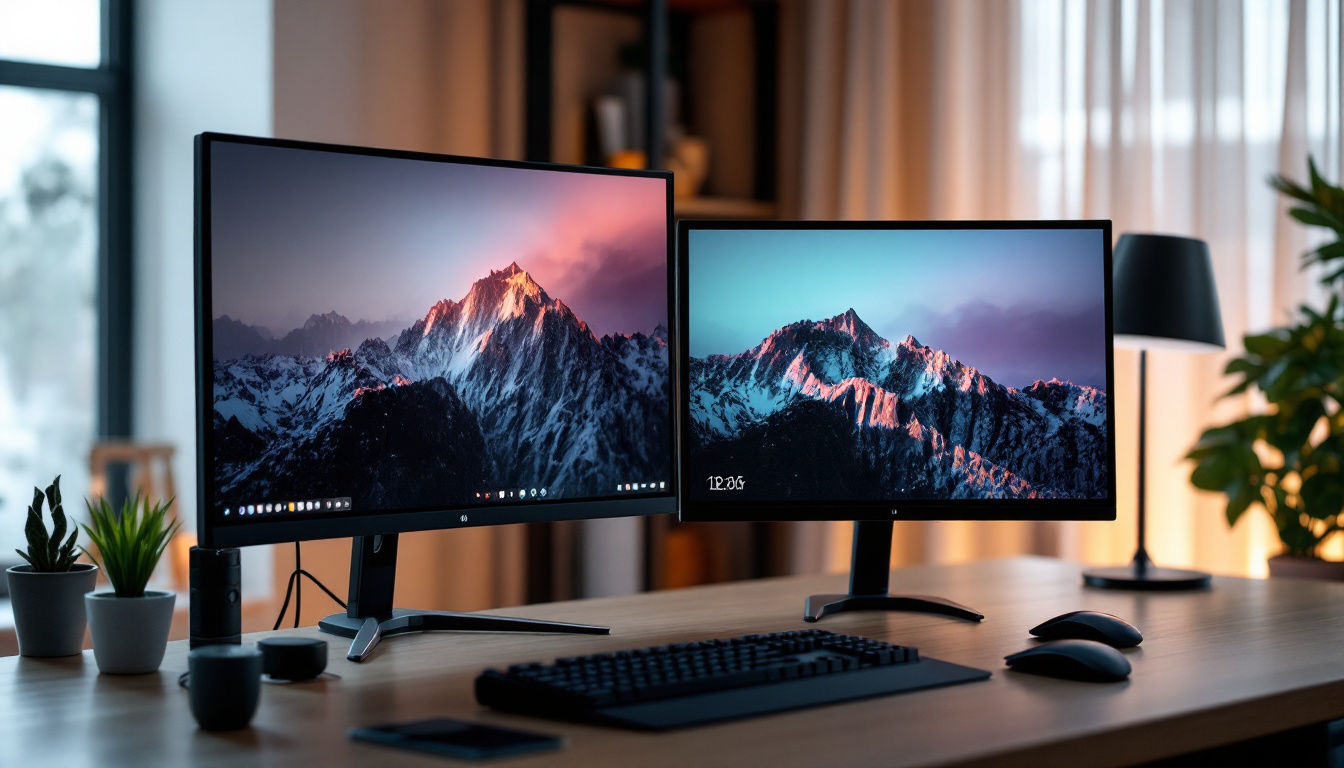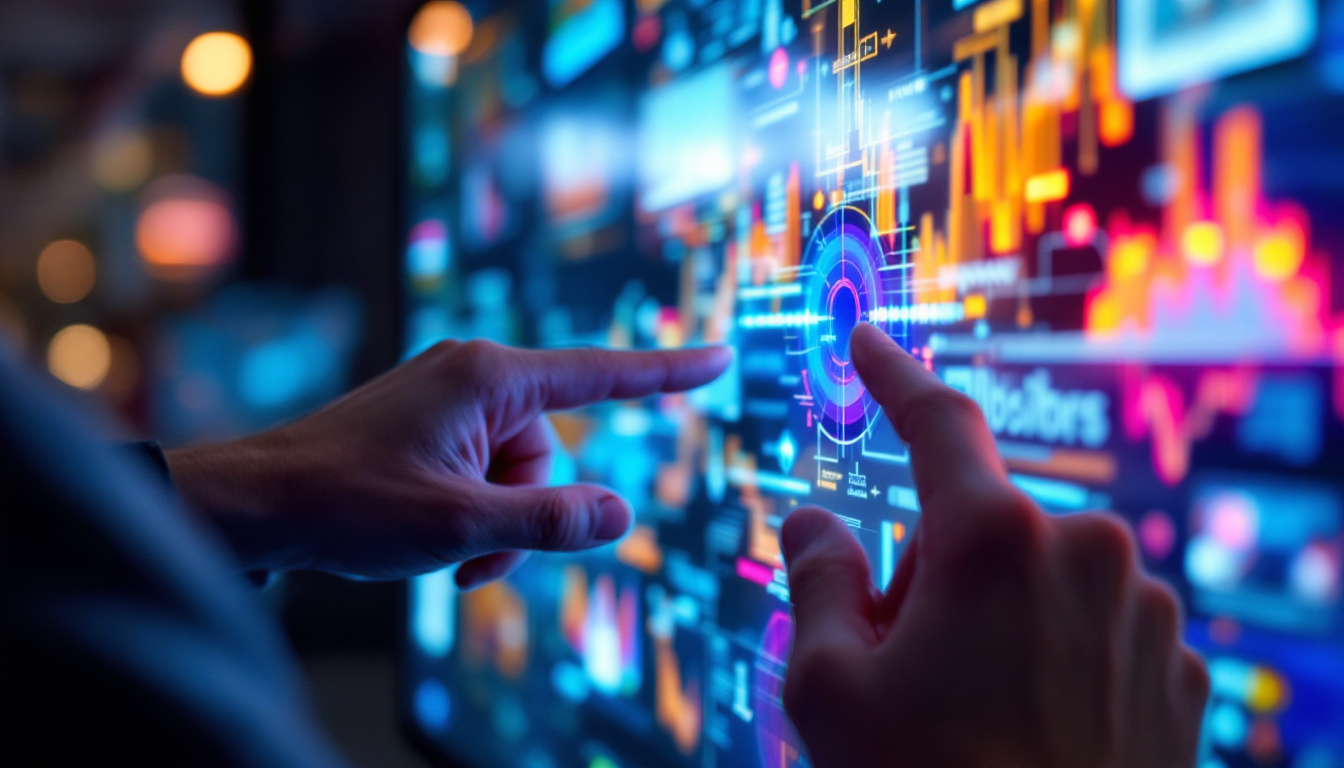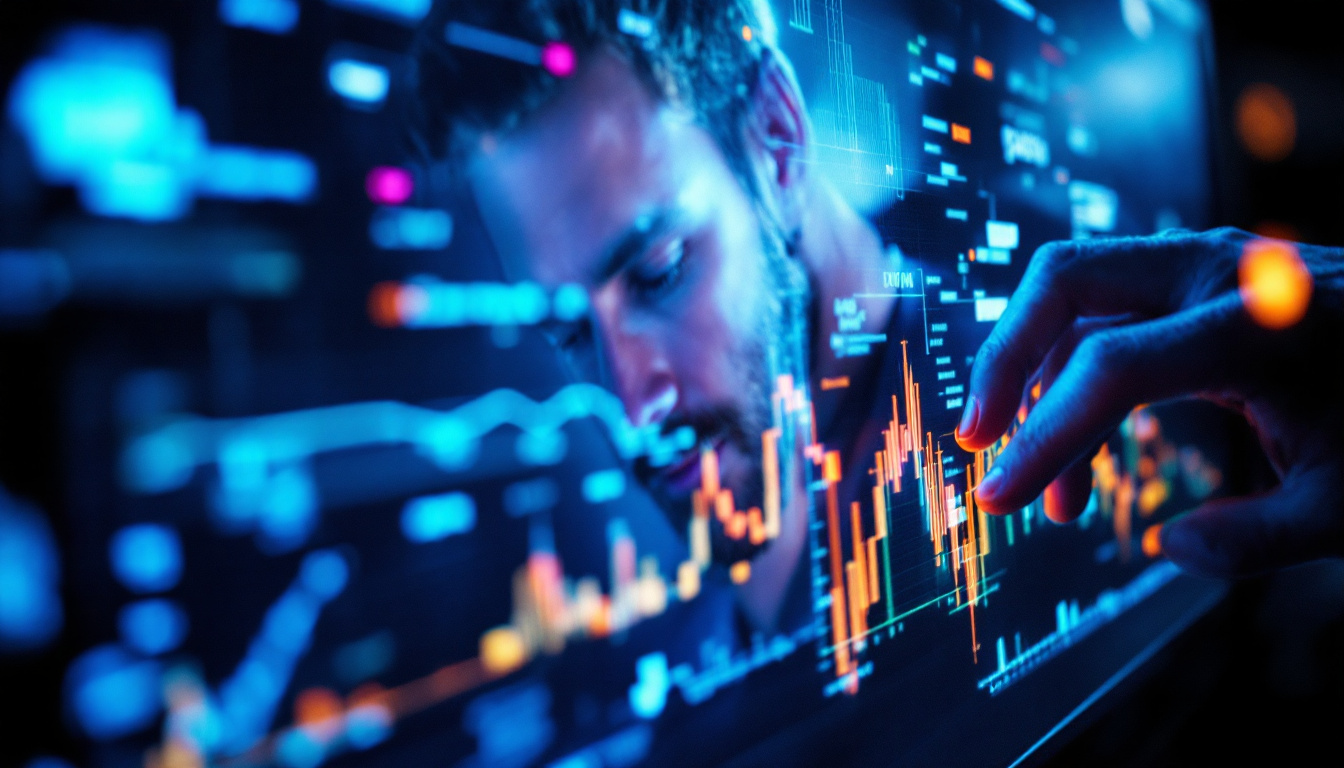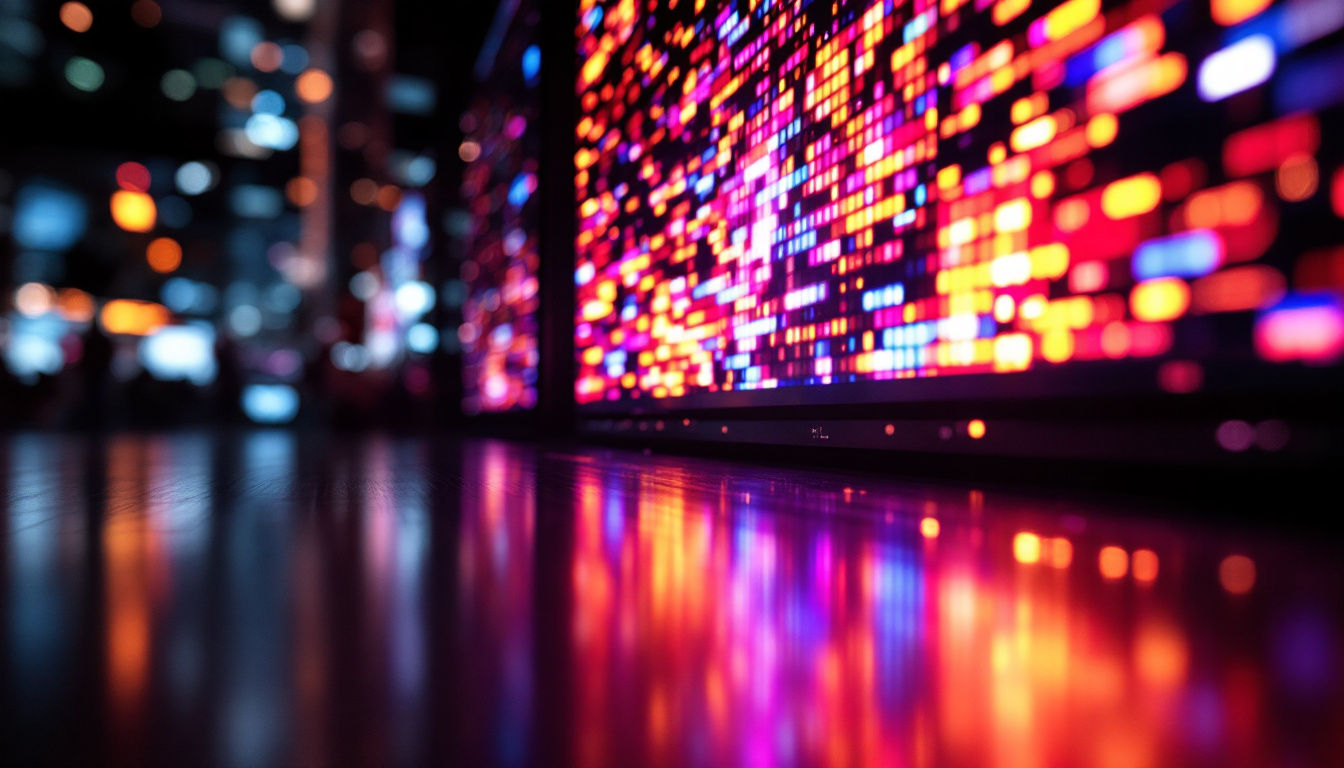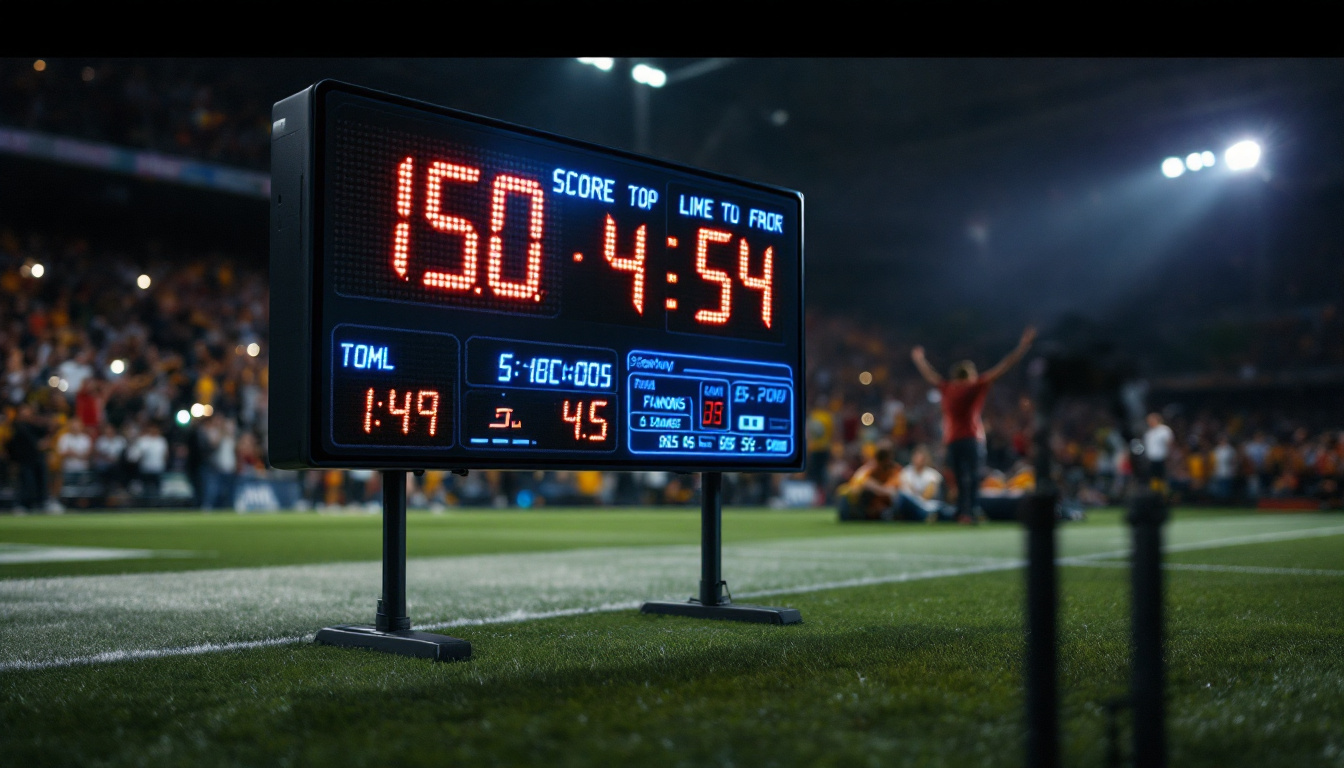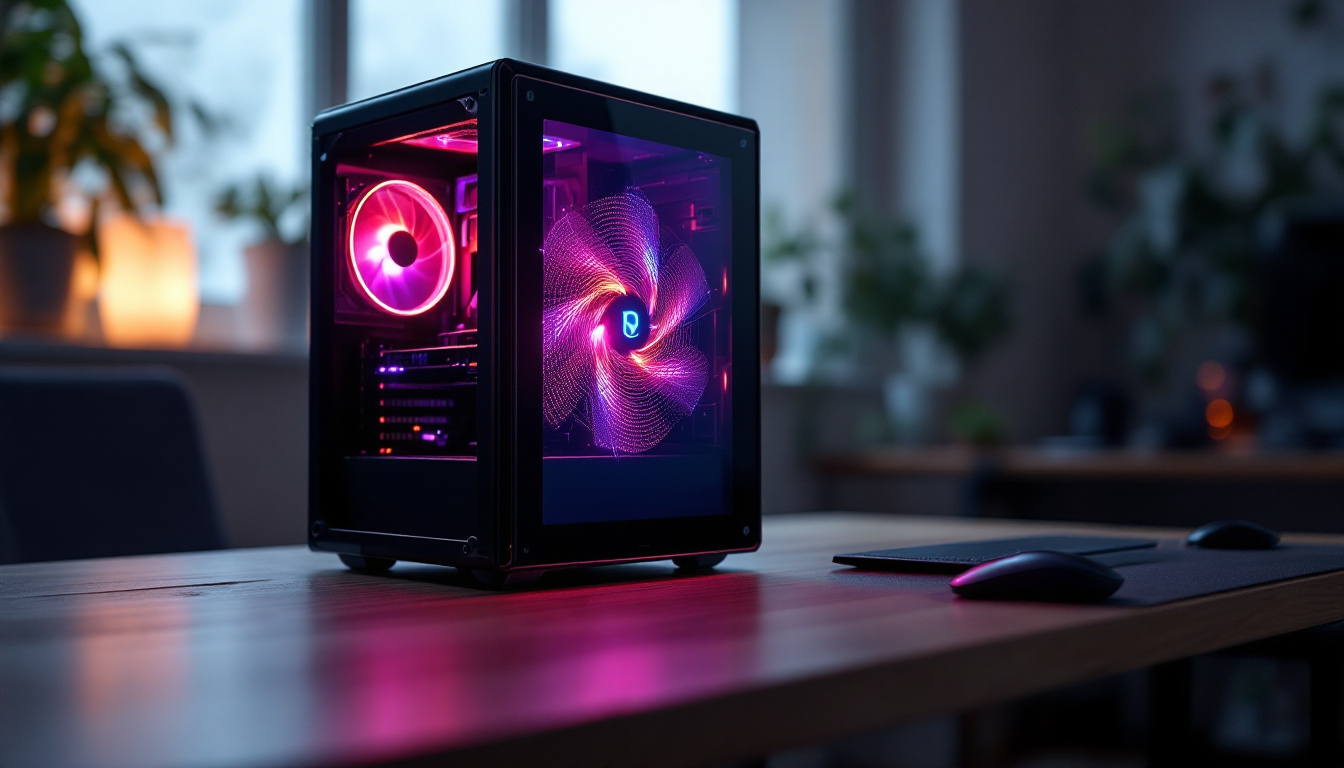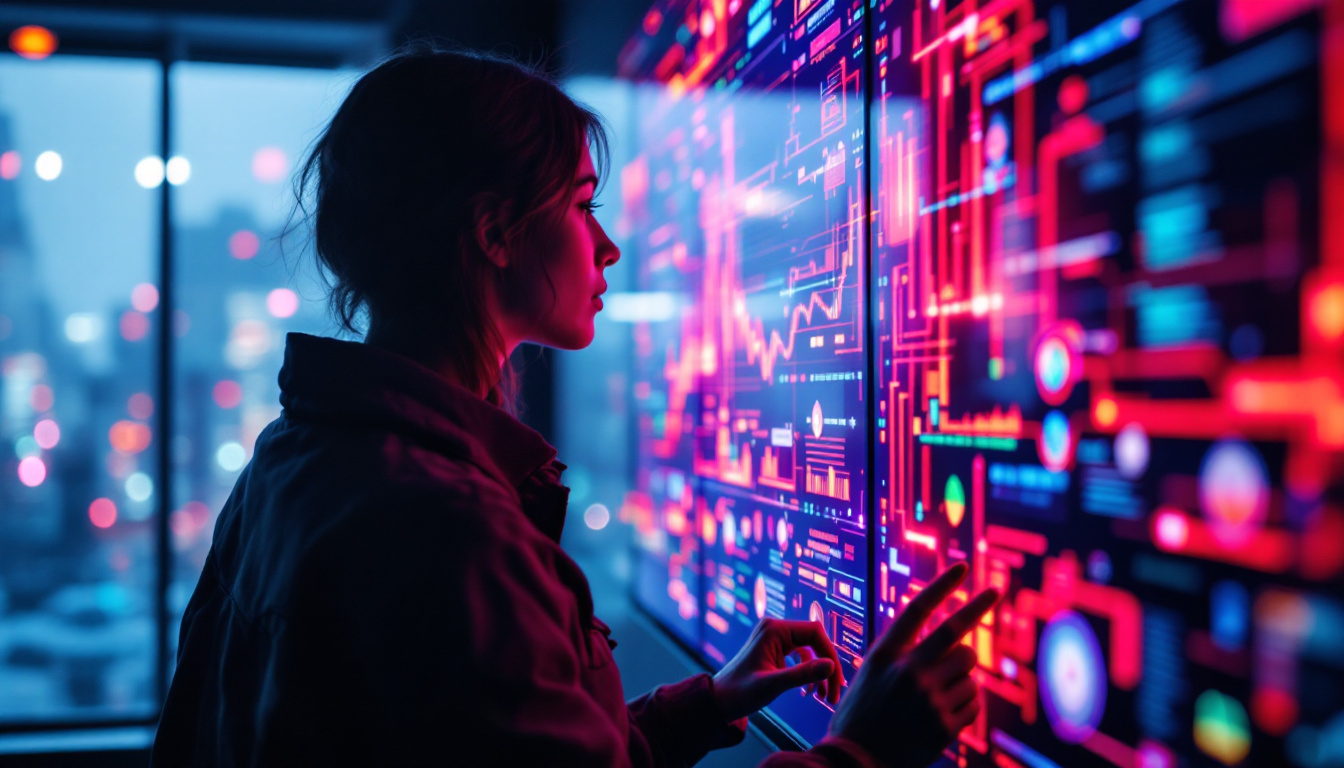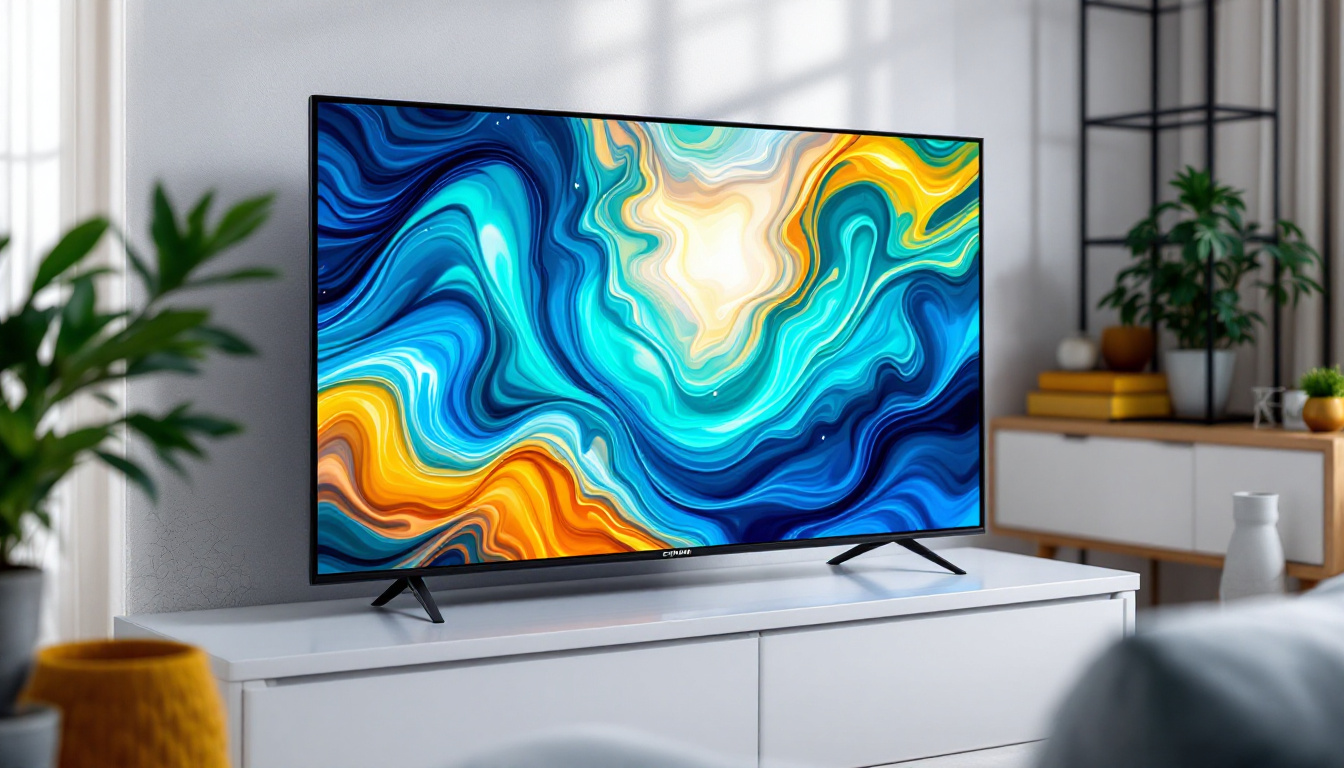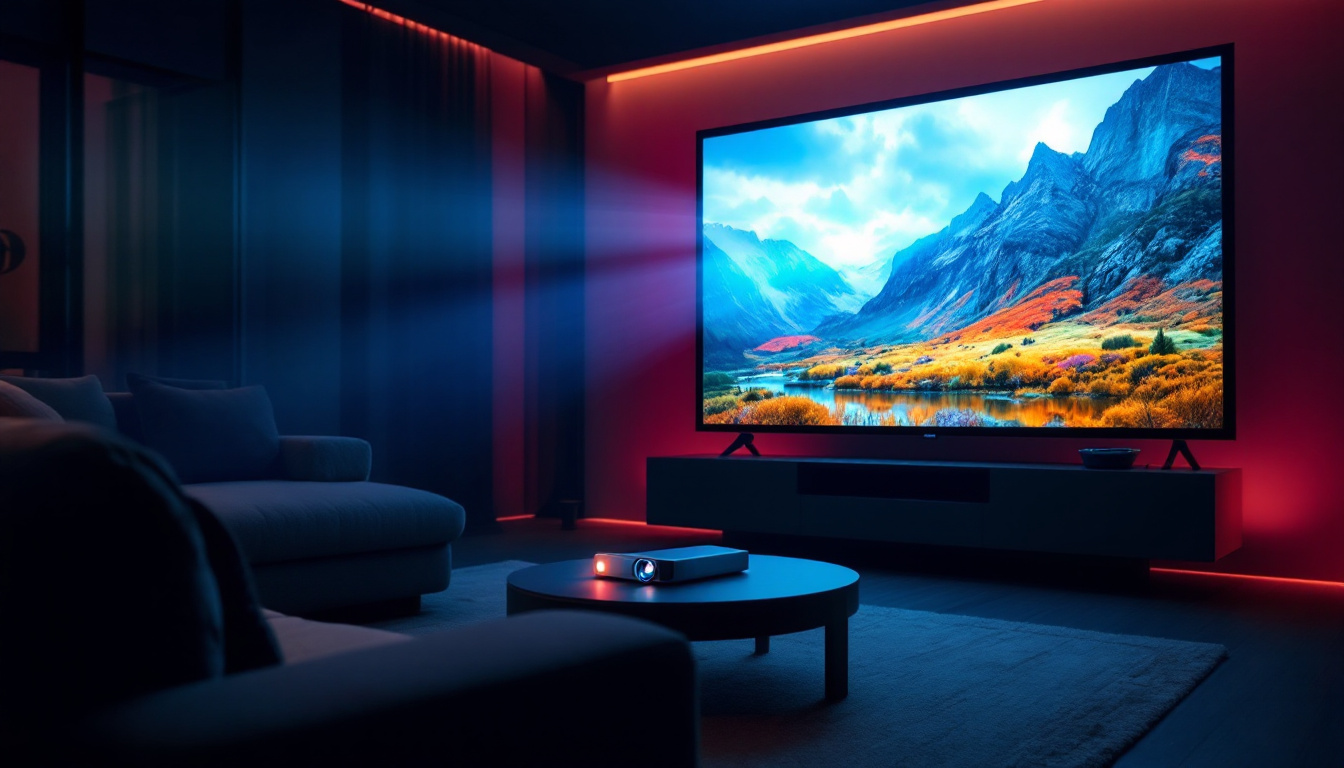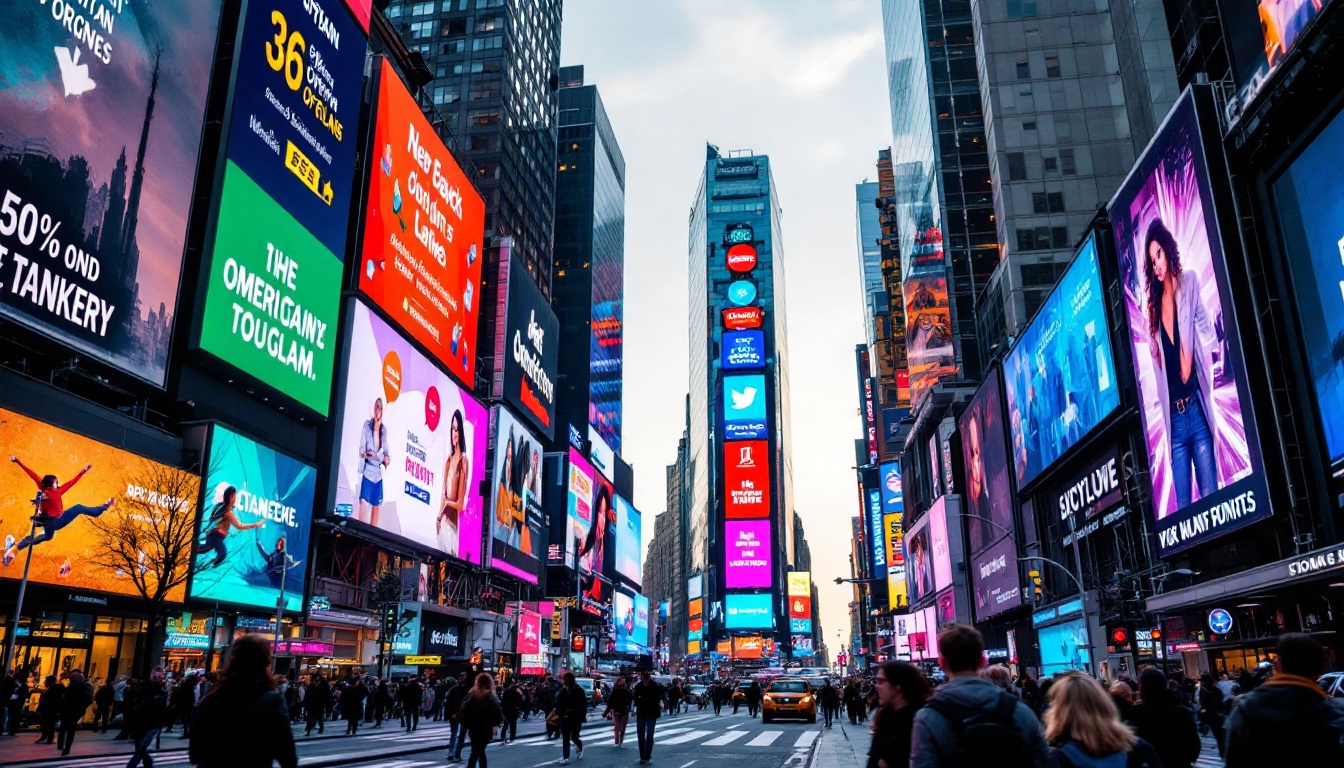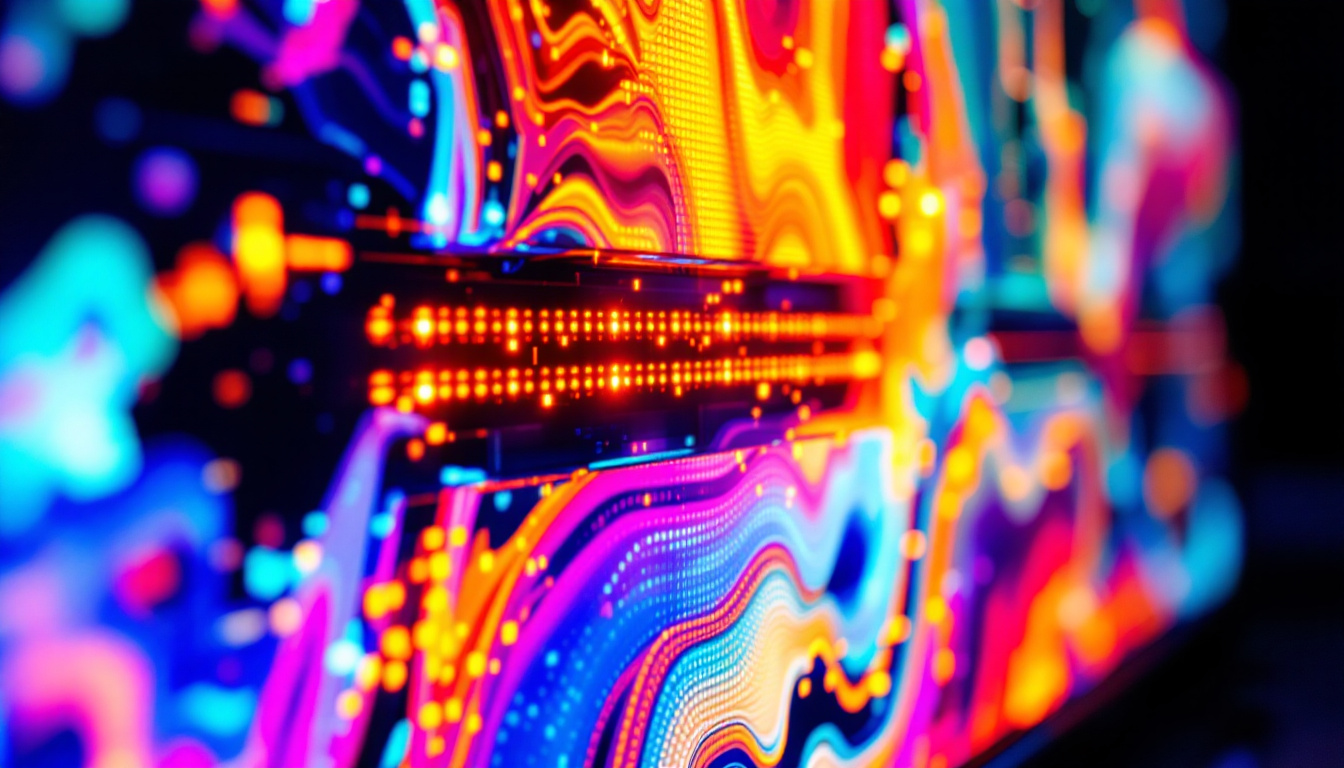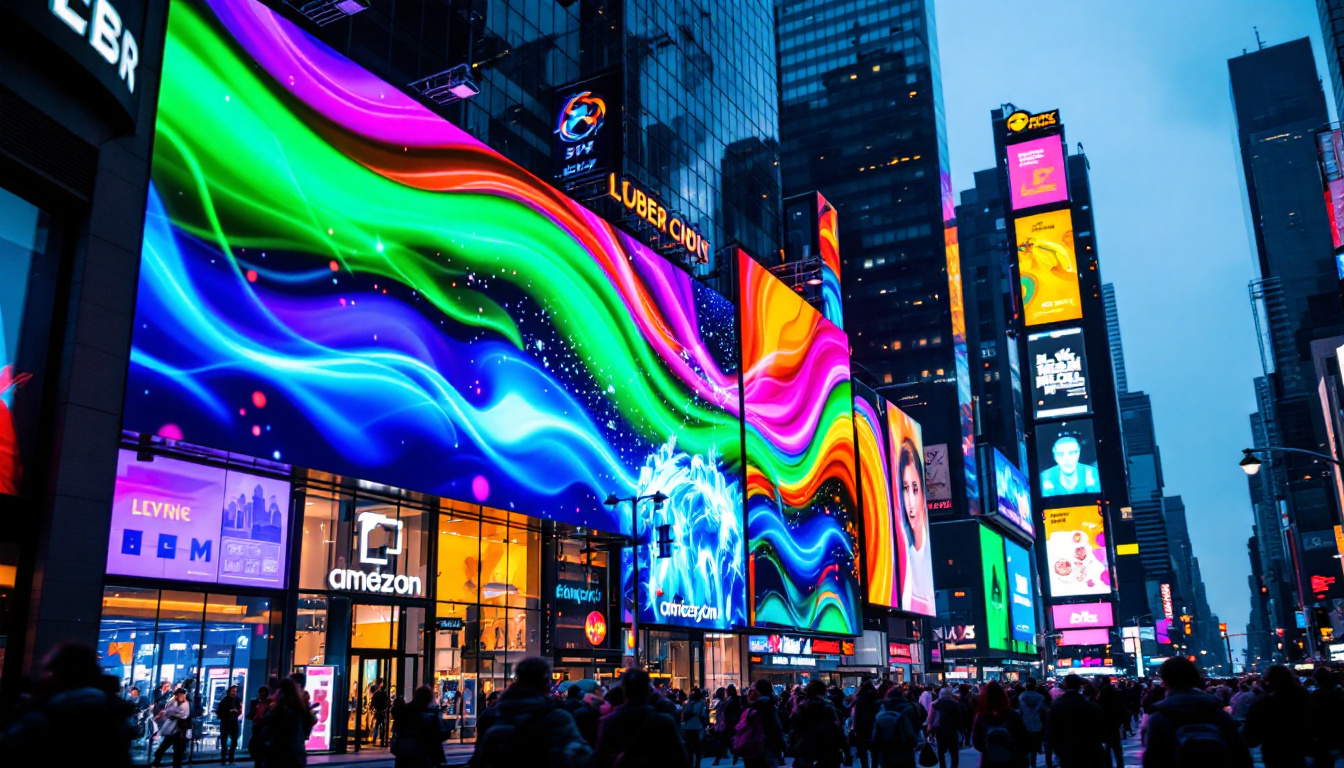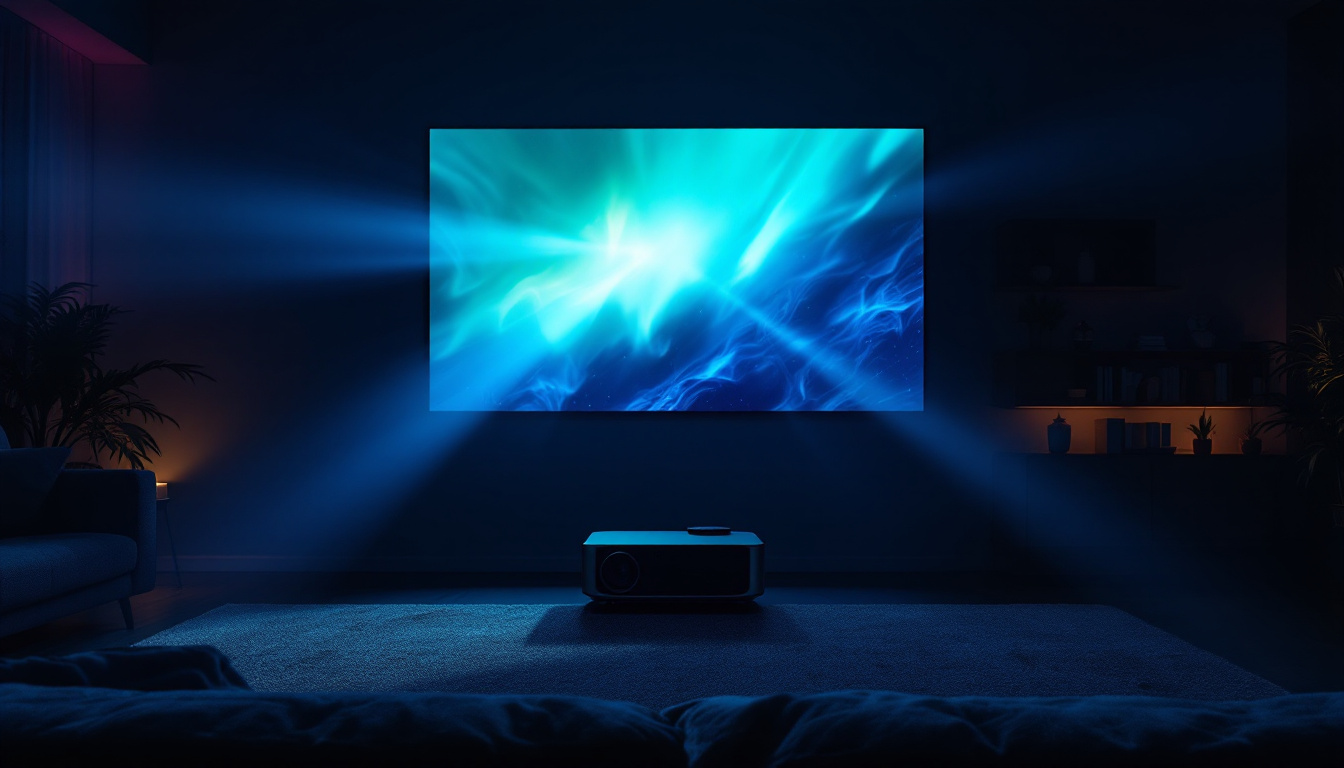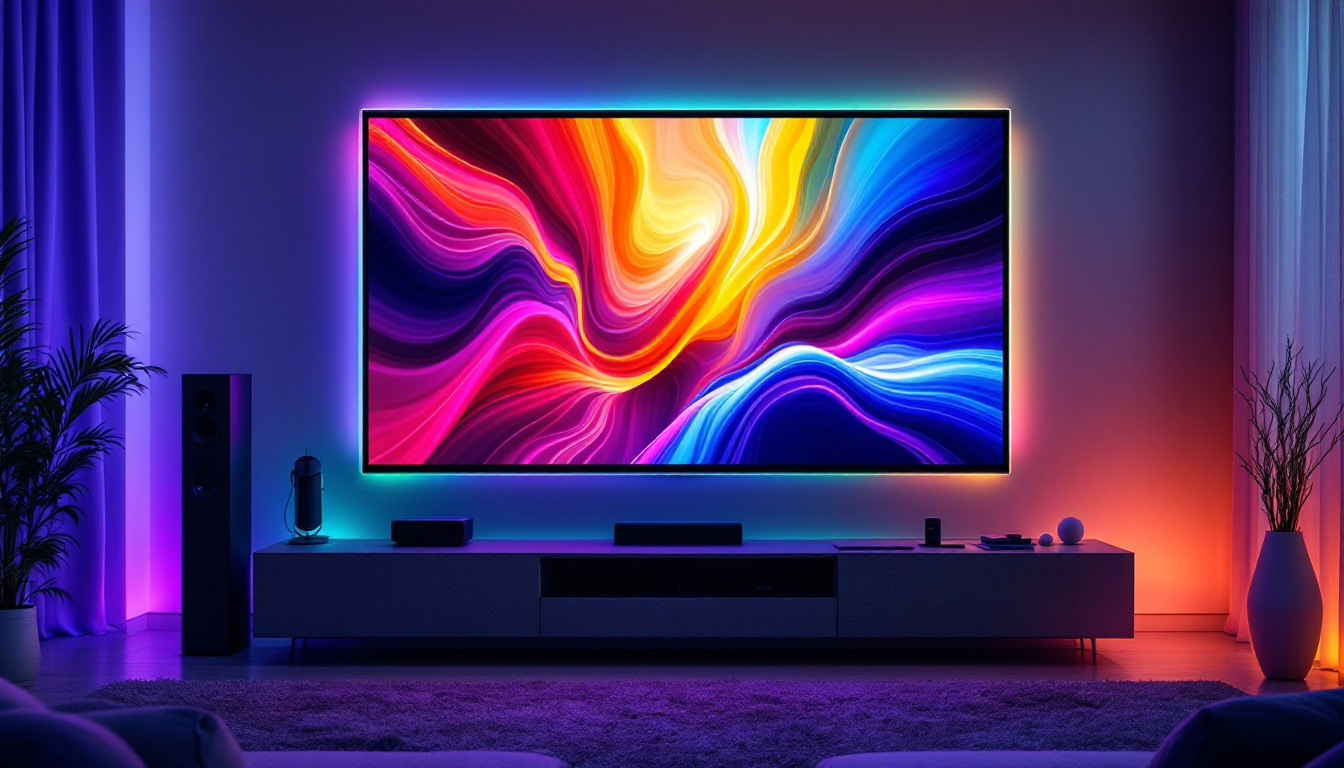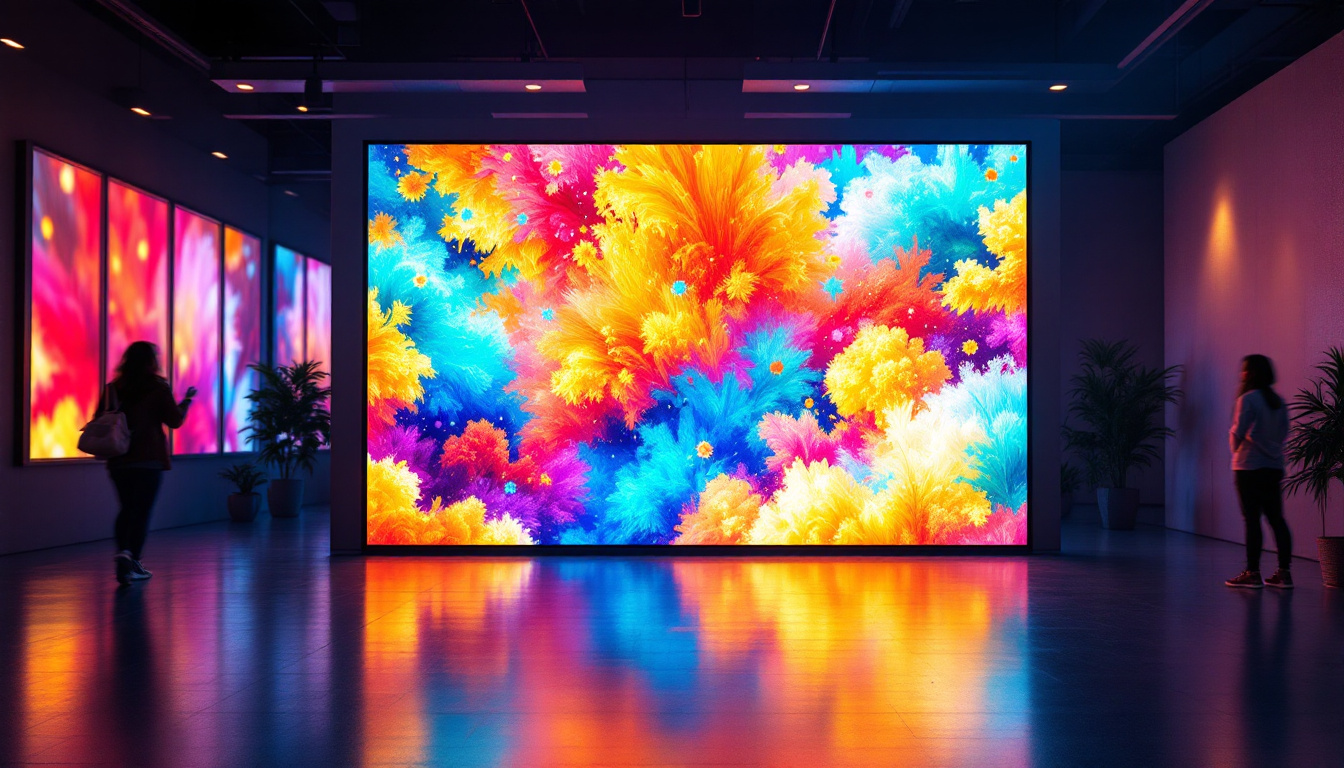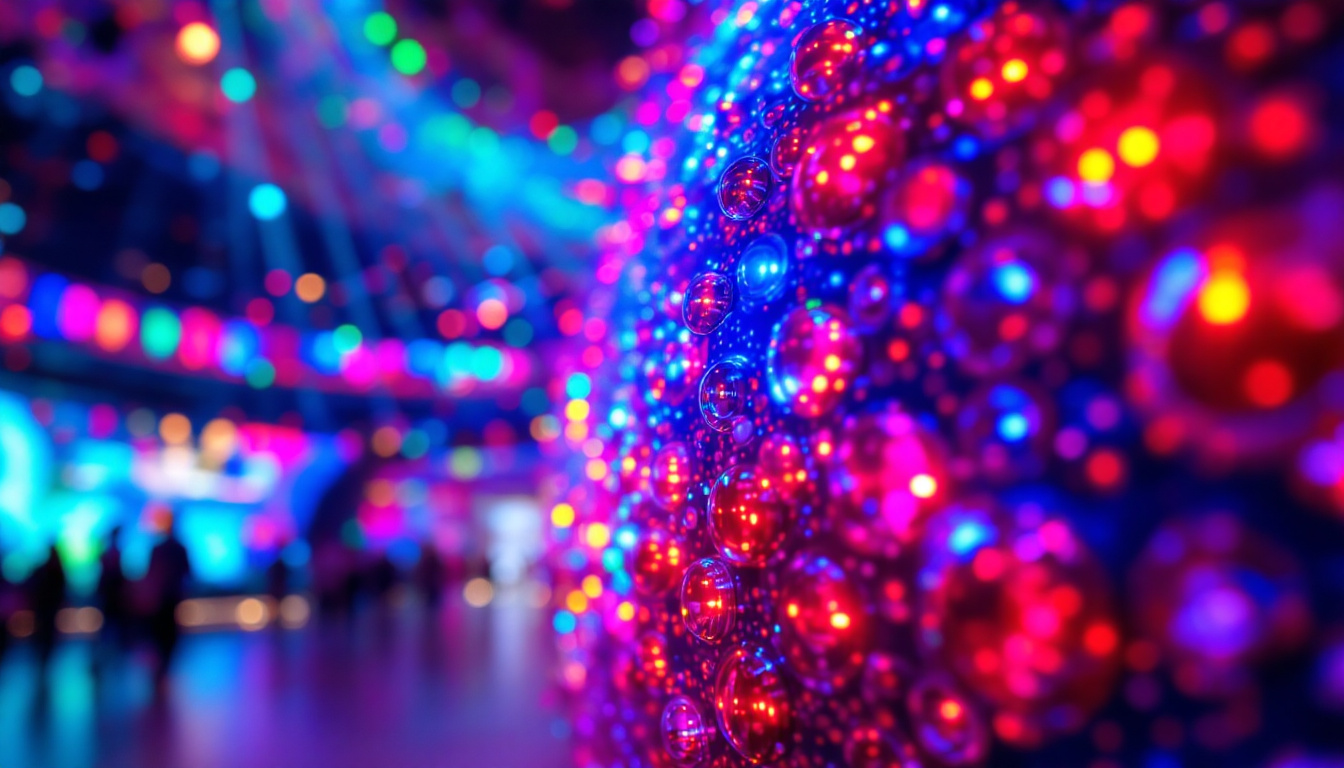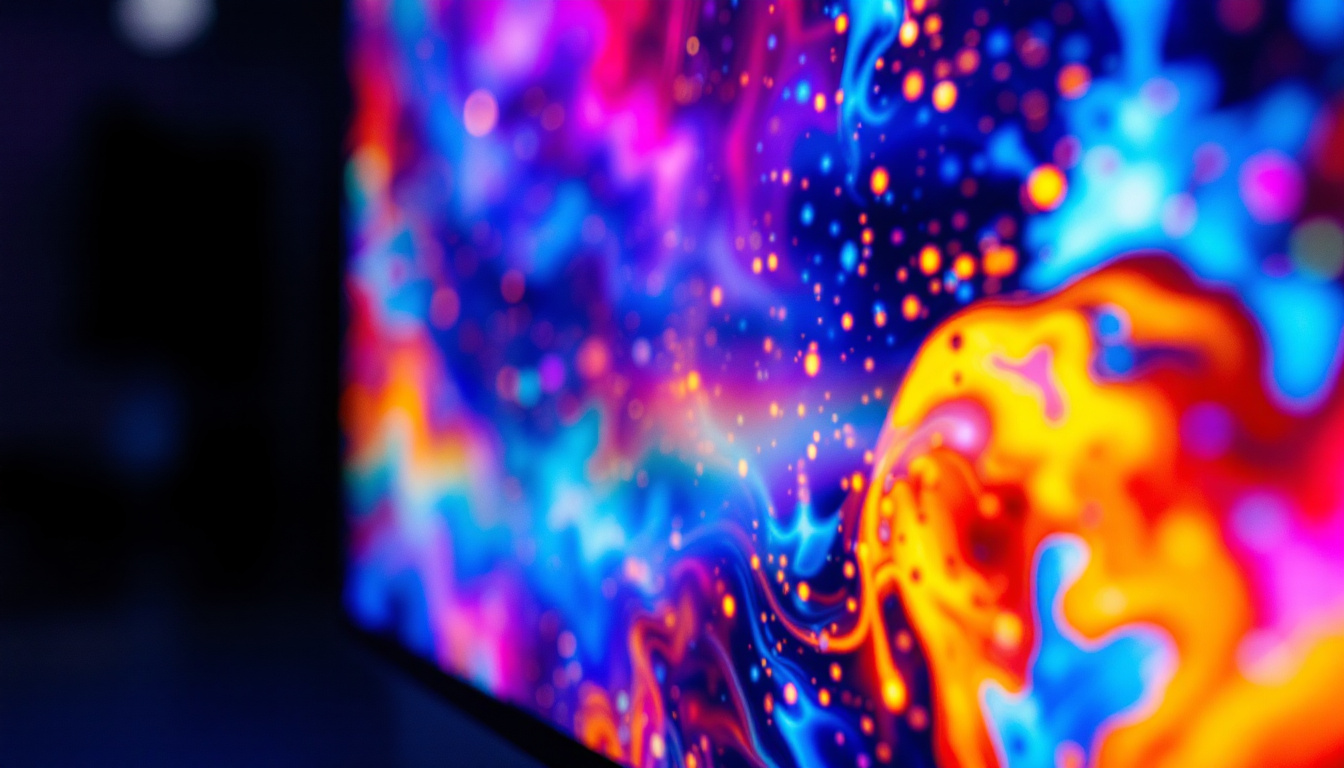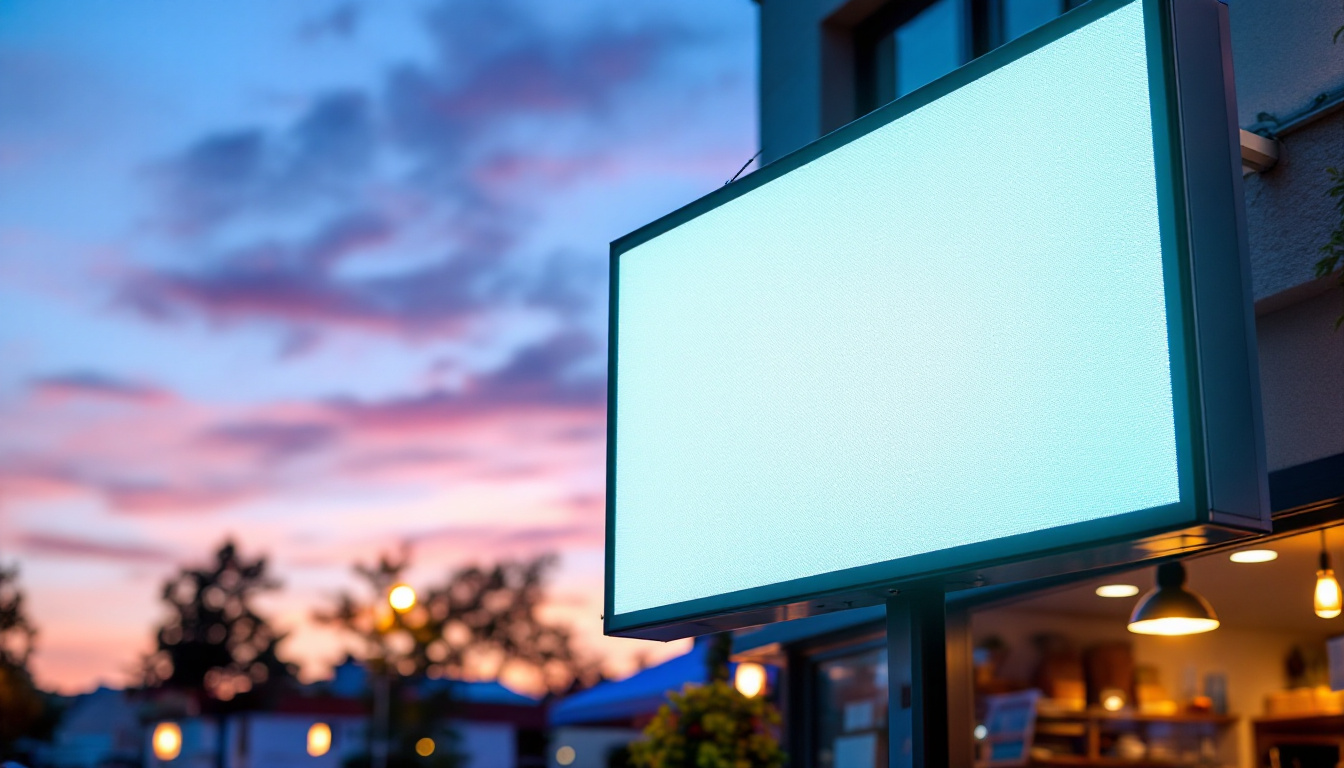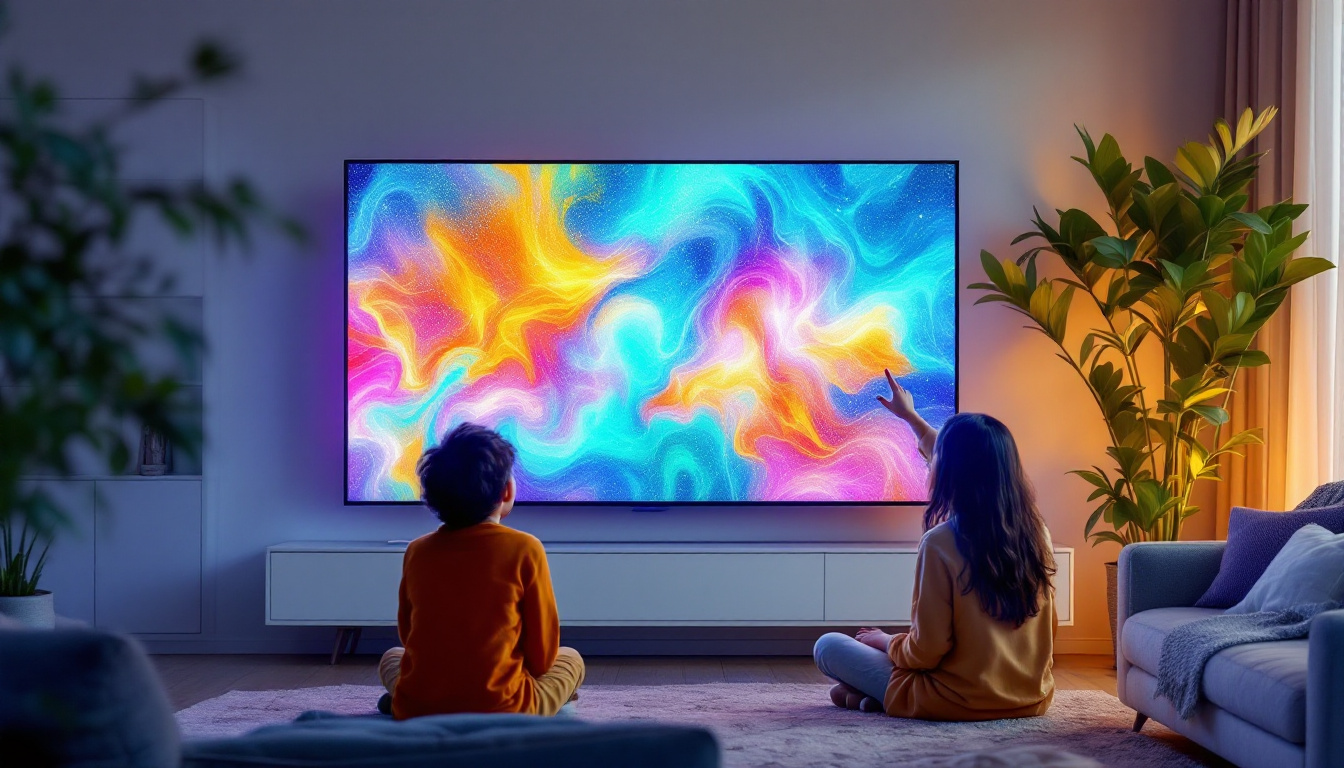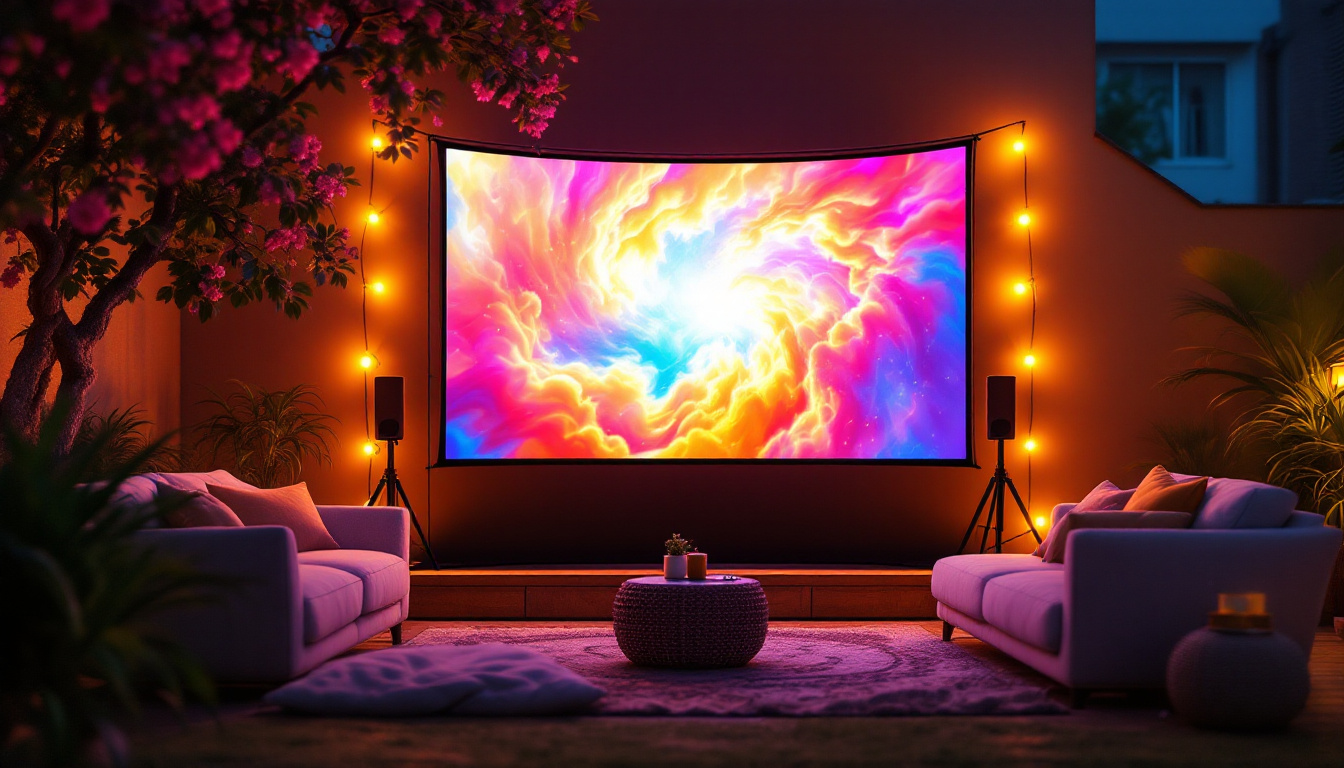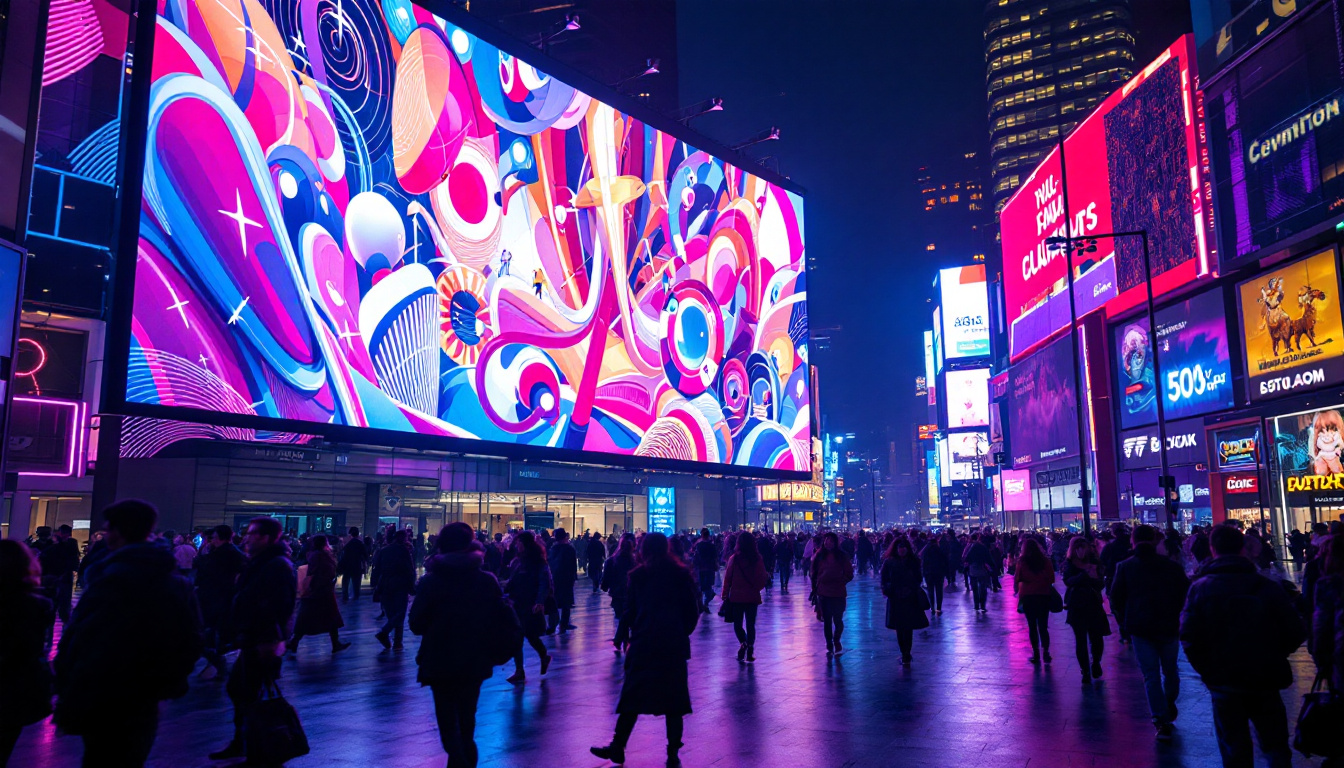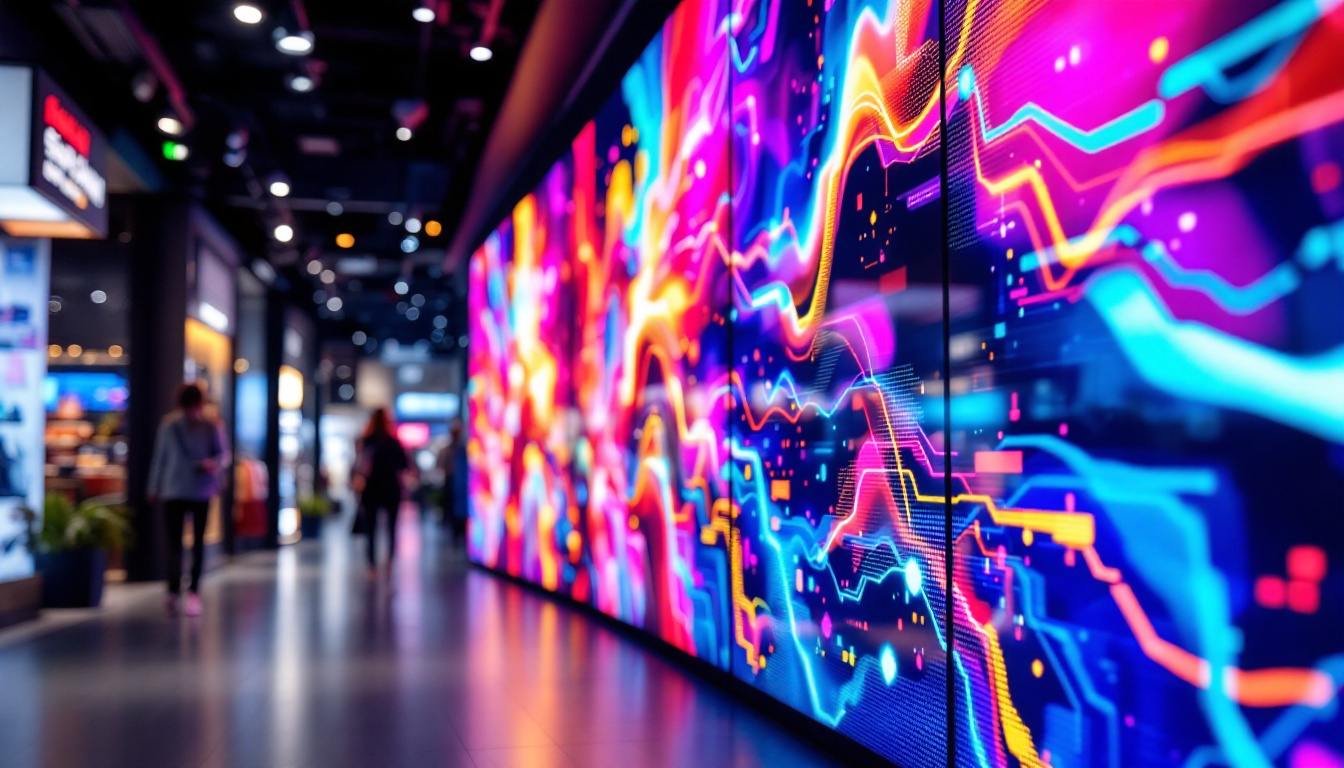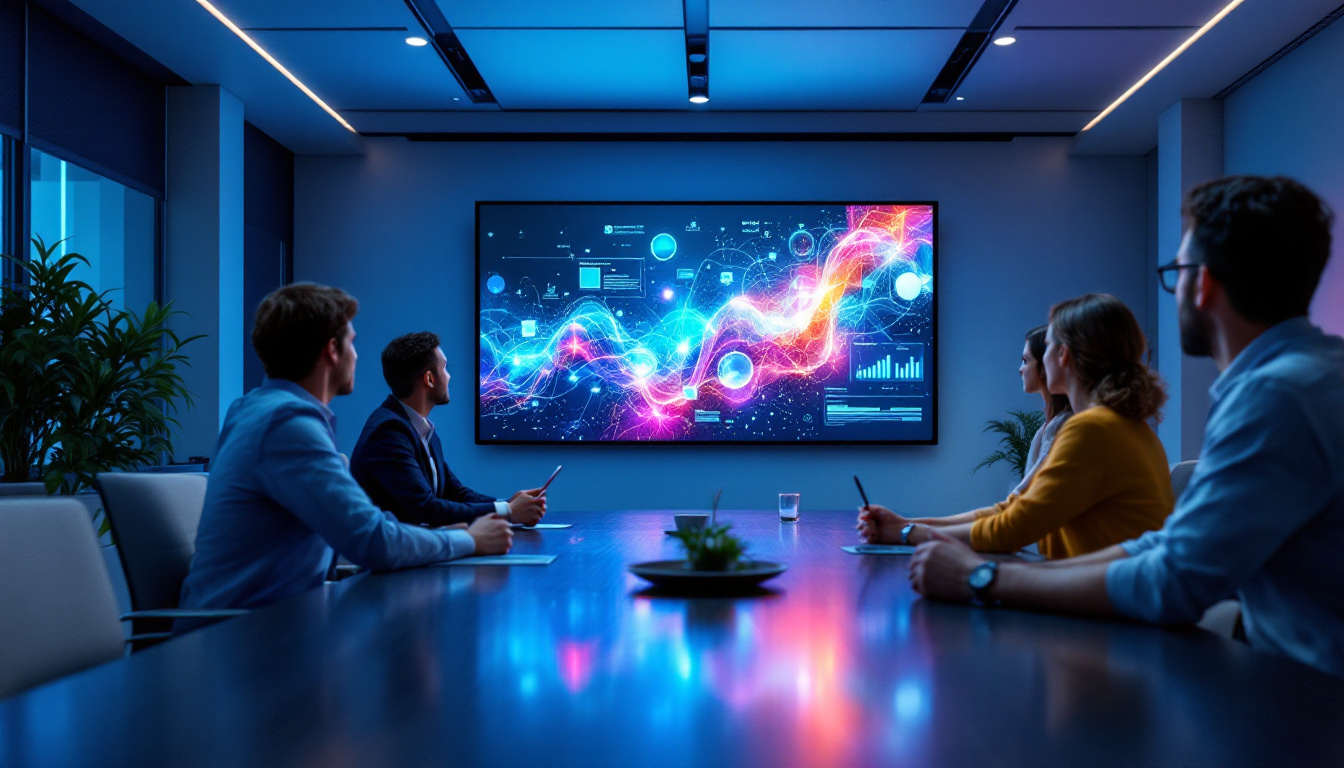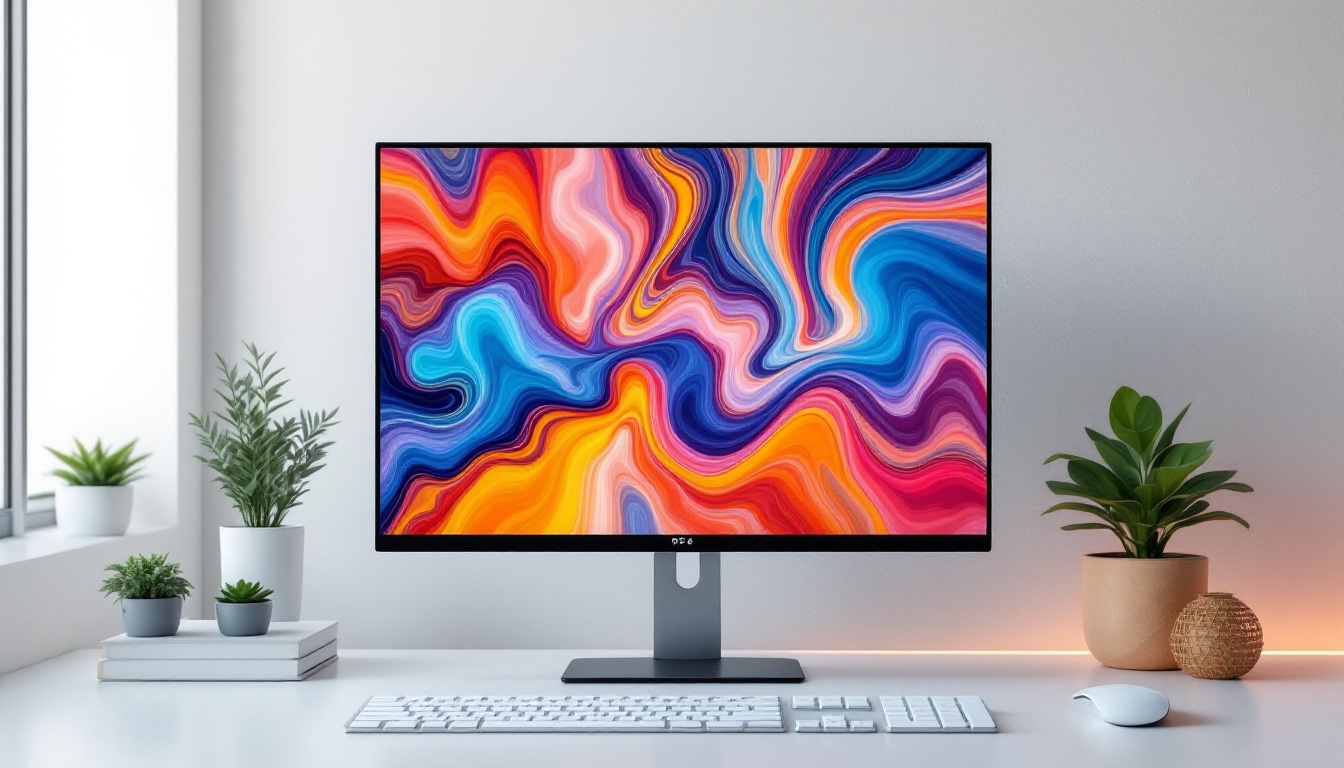In the world of digital art, the emergence of LED displays has revolutionized how artists present their work. These vibrant screens not only enhance the visual experience but also provide new avenues for creativity and interactivity. This article delves into the intricacies of LED displays, exploring their technology, applications, and the impact they have on the art world.
Understanding LED Technology
Light Emitting Diodes (LEDs) are semiconductor devices that emit light when an electric current passes through them. This technology has evolved significantly since its inception, leading to the development of high-quality displays used in various applications, including digital art. The versatility of LEDs has made them a staple in modern lighting solutions, from residential spaces to large-scale commercial installations, revolutionizing how we illuminate our environments.
The Basics of LED Functionality
At the core of LED technology is the principle of electroluminescence. When electrons recombine with holes within the semiconductor material, energy is released in the form of light. This process allows LEDs to produce bright, vivid colors with remarkable energy efficiency. Unlike traditional incandescent bulbs, LEDs consume less power and have a longer lifespan, making them an ideal choice for continuous use in art displays. Furthermore, the ability to control the intensity and color of LEDs with precision has opened up new avenues for artists and designers, enabling them to create dynamic, interactive installations that respond to their environment.
Types of LED Displays
There are several types of LED displays, each suited for different applications. The most common types include:
- Direct View LED Displays: These are large screens composed of individual LED modules that can be used for both indoor and outdoor installations. They are known for their brightness and clarity, making them ideal for advertising billboards and public information displays.
- LED Backlit Displays: These displays use LEDs to illuminate an LCD panel from behind, enhancing color accuracy and contrast. They are widely used in televisions and computer monitors, providing a more vibrant viewing experience compared to traditional backlighting methods.
- Organic LED (OLED) Displays: Utilizing organic compounds, these displays offer superior color quality and flexibility, allowing for innovative designs. Their thin profile and ability to produce deep blacks make them popular in high-end televisions and mobile devices.
In addition to these common types, there are also specialized LED displays such as transparent LEDs, which allow for the creation of see-through screens that can be integrated into storefronts and windows, maintaining visibility while displaying vibrant content. Another emerging technology is MicroLED, which consists of tiny, self-emissive LEDs that promise even higher resolution and efficiency, paving the way for next-generation displays that could revolutionize everything from virtual reality to large-scale digital art installations. The continuous advancements in LED technology not only enhance visual experiences but also contribute to sustainability efforts by reducing energy consumption across various sectors.
Applications in Digital Art
LED displays have found a myriad of applications within the realm of digital art. Artists are increasingly leveraging this technology to create immersive experiences that engage viewers on multiple levels.
Interactive Installations
One of the most exciting applications of LED technology in art is the creation of interactive installations. Artists can design pieces that respond to viewer movements, sounds, or even touch. This interactivity transforms passive observation into an engaging experience, inviting the audience to become a part of the artwork.
For example, an artist might use motion sensors to change the colors or patterns displayed on an LED screen based on the viewer’s proximity. Such installations not only captivate audiences but also encourage them to explore their surroundings in new ways.
Dynamic Visual Storytelling
LED displays enable artists to tell stories through dynamic visuals that can change in real-time. This capability allows for a narrative to unfold in a way that static images cannot achieve. Artists can incorporate video, animation, and sound to create a multisensory experience that captivates viewers.
For instance, a digital mural displayed on an LED wall can evolve throughout the day, reflecting different themes or moods. This adaptability makes LED displays a powerful tool for artists aiming to convey complex narratives or emotions.
Augmented Reality Integration
As technology continues to advance, the integration of augmented reality (AR) with LED displays is becoming increasingly popular in the art world. By combining AR with LED technology, artists can create layered experiences that blend the physical and digital realms.
Imagine walking through an art gallery where LED displays provide a backdrop for AR animations that enhance the physical artwork. This fusion of technologies allows for a richer storytelling experience, inviting viewers to engage with art in innovative ways.
Benefits of Using LED Displays in Art
The advantages of incorporating LED displays into digital art are numerous. From enhanced visual quality to increased engagement, artists are discovering the potential of this technology.
Vibrant Colors and High Brightness
One of the most significant benefits of LED displays is their ability to produce vibrant colors and high brightness levels. This feature is particularly important for artists who wish to create visually striking pieces that stand out in various lighting conditions.
LED displays can achieve a wide color gamut, allowing artists to reproduce colors accurately and vividly. This capability is essential for digital artists who want their work to maintain its integrity across different mediums and environments.
Energy Efficiency and Longevity
Compared to traditional display technologies, LEDs are more energy-efficient and have a longer lifespan. This not only reduces operational costs but also aligns with the growing trend towards sustainability in the art world.
Artists can create large-scale installations without the worry of excessive energy consumption or frequent replacements. This reliability allows for more ambitious projects that can remain on display for extended periods.
Versatility in Design
LED displays come in various shapes and sizes, offering artists the flexibility to experiment with their designs. From curved screens to modular panels, the possibilities are virtually limitless. This versatility enables artists to push the boundaries of traditional art forms and create unique installations that challenge conventional aesthetics.
Moreover, the lightweight nature of LED technology allows for easy installation and transportation, making it an ideal choice for traveling exhibitions and pop-up galleries.
Challenges and Considerations
Despite the many advantages of LED displays, there are also challenges and considerations that artists must keep in mind when incorporating this technology into their work.
Cost Implications
While the prices of LED technology have decreased over the years, high-quality displays can still represent a significant investment. Artists must weigh the costs against the potential benefits, especially when planning large-scale installations.
Additionally, ongoing maintenance and potential upgrades can add to the overall expense. Artists should consider their budget and seek funding opportunities or partnerships that can help offset these costs.
Technical Expertise
Working with LED technology often requires a certain level of technical expertise. Artists may need to collaborate with engineers or technicians to ensure that their installations function as intended.
This collaboration can be beneficial, as it allows artists to focus on their creative vision while leveraging the technical skills of others. However, it can also be a barrier for those who prefer to work independently or lack access to technical resources.
Environmental Considerations
As with any technology, the environmental impact of LED displays is a consideration for artists. While LEDs are more energy-efficient than traditional options, the production and disposal of electronic components can contribute to electronic waste.
Artists can mitigate these concerns by choosing sustainable materials and practices, such as recycling old displays or opting for manufacturers that prioritize eco-friendly production methods.
The Future of LED Displays in Art
The future of LED displays in the art world is bright, with ongoing advancements in technology paving the way for even more innovative applications. As artists continue to explore the potential of this medium, several trends are emerging that could shape the landscape of digital art.
Increased Interactivity
As technology evolves, the potential for interactivity in art installations will only increase. Future LED displays may incorporate advanced sensors, AI, and machine learning to create even more responsive and engaging experiences for viewers.
This shift towards interactivity will likely redefine the relationship between the artist and the audience, fostering a more collaborative and participatory approach to art.
Integration with Virtual Reality
The integration of virtual reality (VR) with LED displays is another exciting frontier. Artists can create immersive environments that transport viewers into entirely new worlds, blurring the lines between reality and digital creation.
As VR technology becomes more accessible, artists will have the opportunity to experiment with new forms of storytelling and expression, expanding the possibilities of digital art.
Global Connectivity
With the rise of online platforms and social media, artists can now reach global audiences through LED displays. Virtual exhibitions and installations can be shared and experienced by people from all corners of the world, breaking down geographical barriers.
This global connectivity allows for a diverse exchange of ideas and influences, enriching the art community and fostering collaboration across cultures.
Conclusion
LED displays have undoubtedly transformed the landscape of digital art, offering artists new tools for expression and engagement. As technology continues to advance, the possibilities for creativity are limitless. By embracing LED technology, artists can create immersive experiences that captivate audiences and redefine the way art is perceived and experienced.
As the art world evolves, the integration of LED displays will likely play a pivotal role in shaping the future of artistic expression. With vibrant colors, interactivity, and innovative storytelling, LED technology is set to illuminate the path for artists seeking to push the boundaries of their craft.
Illuminate Your Vision with LumenMatrix
Ready to elevate your digital art and captivate audiences like never before? Discover LumenMatrix’s innovative LED display solutions, where technology meets creativity. From Indoor and Outdoor LED Wall Displays to specialized solutions like Vehicle, Sports, and Floor LED Displays, LumenMatrix offers a spectrum of options to bring your artistic vision to life. Embrace the future of visual storytelling with our Custom, All-in-One, and Transparent LED Displays. Check out LumenMatrix LED Display Solutions today and transform the way you communicate with your audience.

